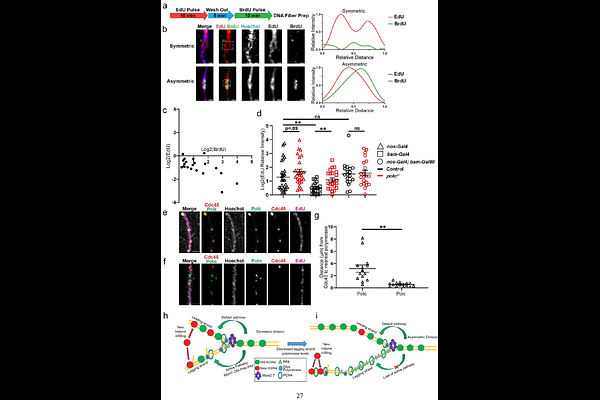Reduced Levels of Lagging Strand Polymerases Shape Stem Cell Chromatin

Reduced Levels of Lagging Strand Polymerases Shape Stem Cell Chromatin
Snedeker, J.; Davis, B. E. M.; Ranjan, R.; Wooten, M. I.; Blundon, J.; Chen, X.
AbstractStem cells display asymmetric histone inheritance while non-stem progenitor cells exhibit symmetric patterns in the Drosophila male germline lineage. Here, we report that components involved in lagging strand synthesis, such as DNA polymerase and {delta} (Pol and Pol{delta}), have significantly reduced levels in stem cells compared to progenitor cells. Compromising Pol genetically induces the replication-coupled histone incorporation pattern in progenitor cells to be indistinguishable from that in stem cells, which can be recapitulated using a Pol inhibitor in a concentration-dependent manner. Furthermore, stem cell-derived chromatin fibers display a higher degree of old histone recycling by the leading strand compared to progenitor cell-derived chromatin fibers. However, upon reducing Pol levels in progenitor cells, the chromatin fibers now display asymmetric old histone recycling just like GSC-derived fibers. The old versus new histone asymmetry is comparable between stem cells and progenitor cells at both S-phase and M-phase. Together, these results indicate that developmentally programmed expression of key DNA replication components is important to shape stem cell chromatin. Furthermore, manipulating one crucial DNA replication component can induce replication-coupled histone dynamics in non-stem cells in a manner similar to that in stem cells.